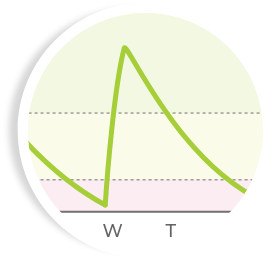What is the difference between prophylactic therapy and on-demand therapy?
When it comes to treatments in hemophilia, there are a few approaches that you and your Hemophilia Treatment Centre (HTC) team can take to treat and prevent bleeds.
Clotting factor concentrates (CFCs) are injectable medicines used to replace clotting factor (Factor VIII or antihemophilic factor) that is missing in people with hemophilia A. CFCs raise the level of Factor VIII (FVIII) in the blood to support the treatment or prevention of bleeding.

Regular administration of CFCs to prevent bleeds is known as prophylactic therapy, whereas administration of CFCs only at the time of a bleed is known as on-demand or episodic therapy.
What is half-life?
Half-life is the time that it takes for the factor eight level in the body to decrease by half from its peak.
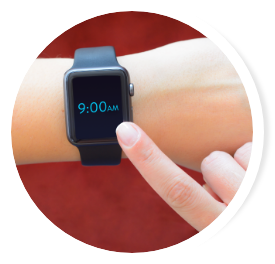
Individualized dosing to meet your needs
Your CFC regimen will be individualized to meet your needs. Your healthcare provider will tell you how much product to use based on your individual weight, level of physical activity, the severity of your hemophilia A, and where you are bleeding. Your healthcare provider may adjust your dose or frequency to provide you with the levels of FVIII that help prevent bleeds.

Timing of infusions
When you receive an infusion, your factor level will increase to a peak level.
Let's consider an infusion on Monday morning, for example. If your factor level reaches a peak of 50%, this dose will offer protection throughout the day. However, by the evening, the level will have already decreased by half to 25%. By Tuesday morning, 12 hours later, the factor level will have dropped by half again down to about 12%. By Tuesday evening, it will be down to 6%. This is illustrated in the graph below.
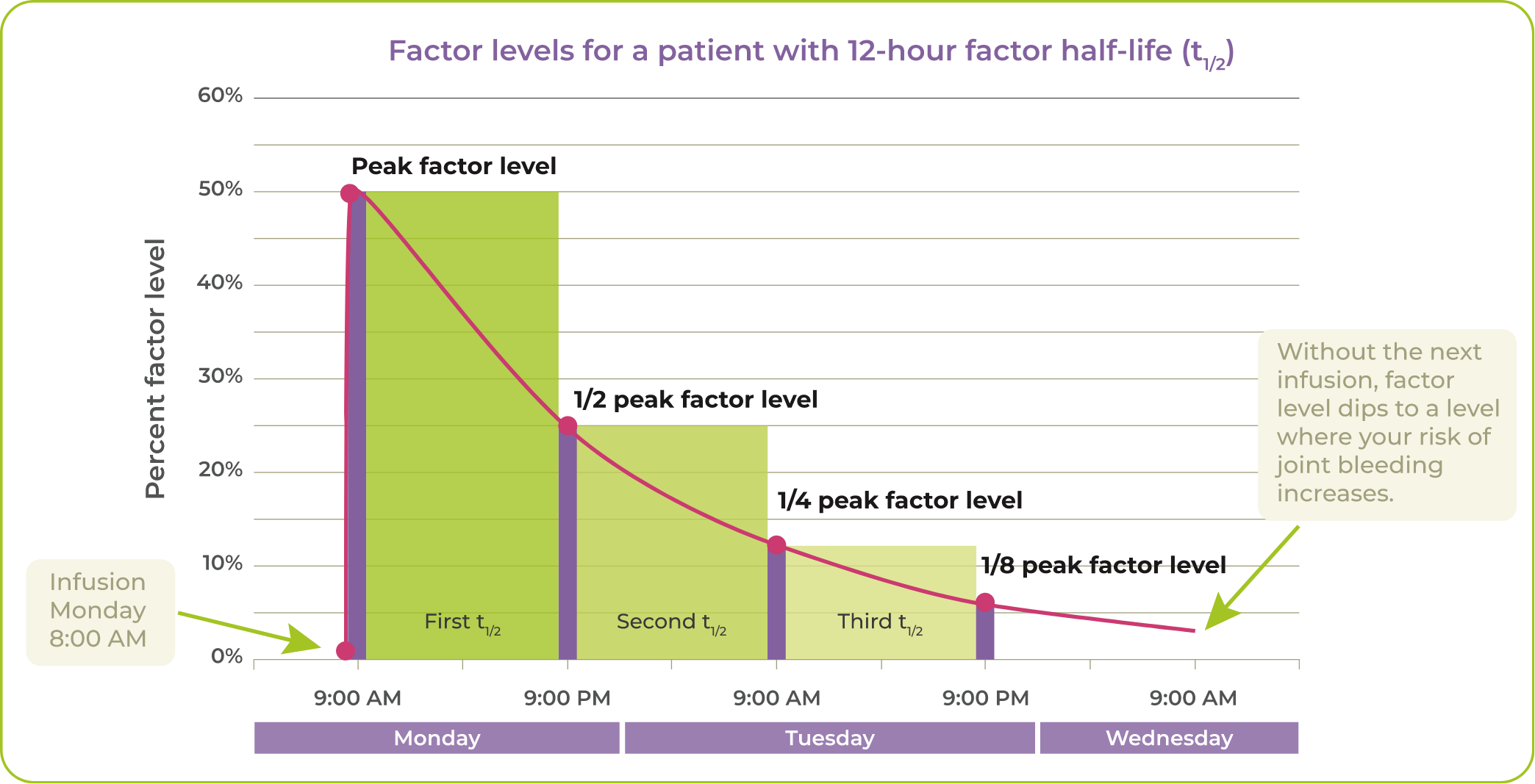
By infusing in the morning, you can have your highest factor level during your most active time of the day. You will have the most protection at the time you are most likely to bleed. If the treatment were delivered in the evening hours, then the highest factor levels would be during the night, when the risk of bleeds is minimal.
Days of the week
Another consideration is what day to administer prophylaxis.
For example, if your child requires factor therapy, and has basketball practice on Tuesday, swimming lessons on Thursday, and a basketball tournament on the weekend, then Monday, Wednesday, and Friday treatment days may not offer optimal coverage when it is needed most.
Alternatively, you could treat on Tuesday, and then again on Saturday and Sunday. You would still be providing three weekly treatments, but your child’s factor levels would be highest when doing the higher risk activity (basketball) on Tuesday, Saturday, and Sunday. Your child’s factor levels would be low during their Thursday swimming lesson, but we know that swimming tends to be a lower risk activity for causing bleeds.
The graphs below show how FVIII levels peak with each treatment and then gradually fall until the next dose is administered.
Not ideal for optimal protection during activity
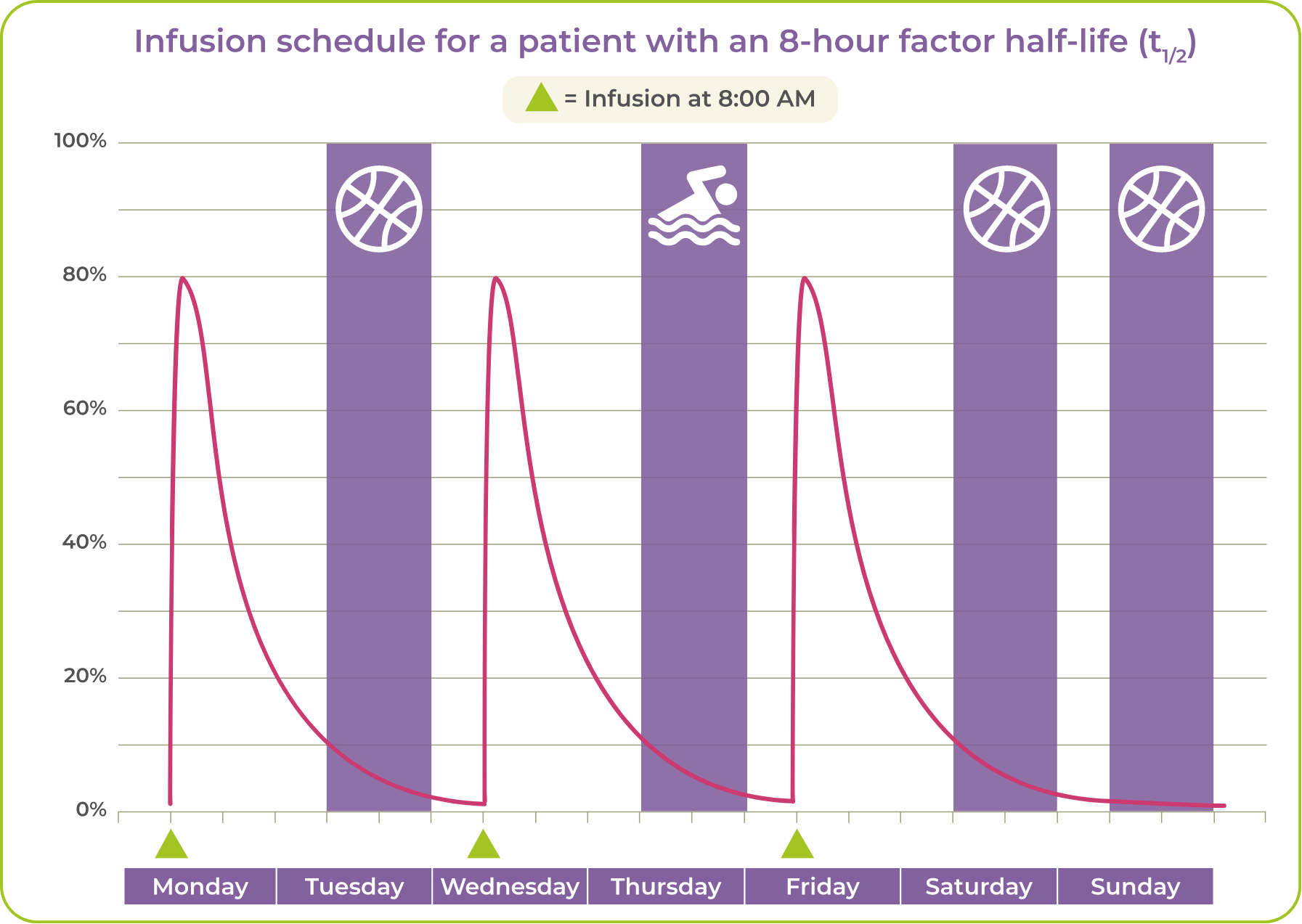
Optimized protection during activity
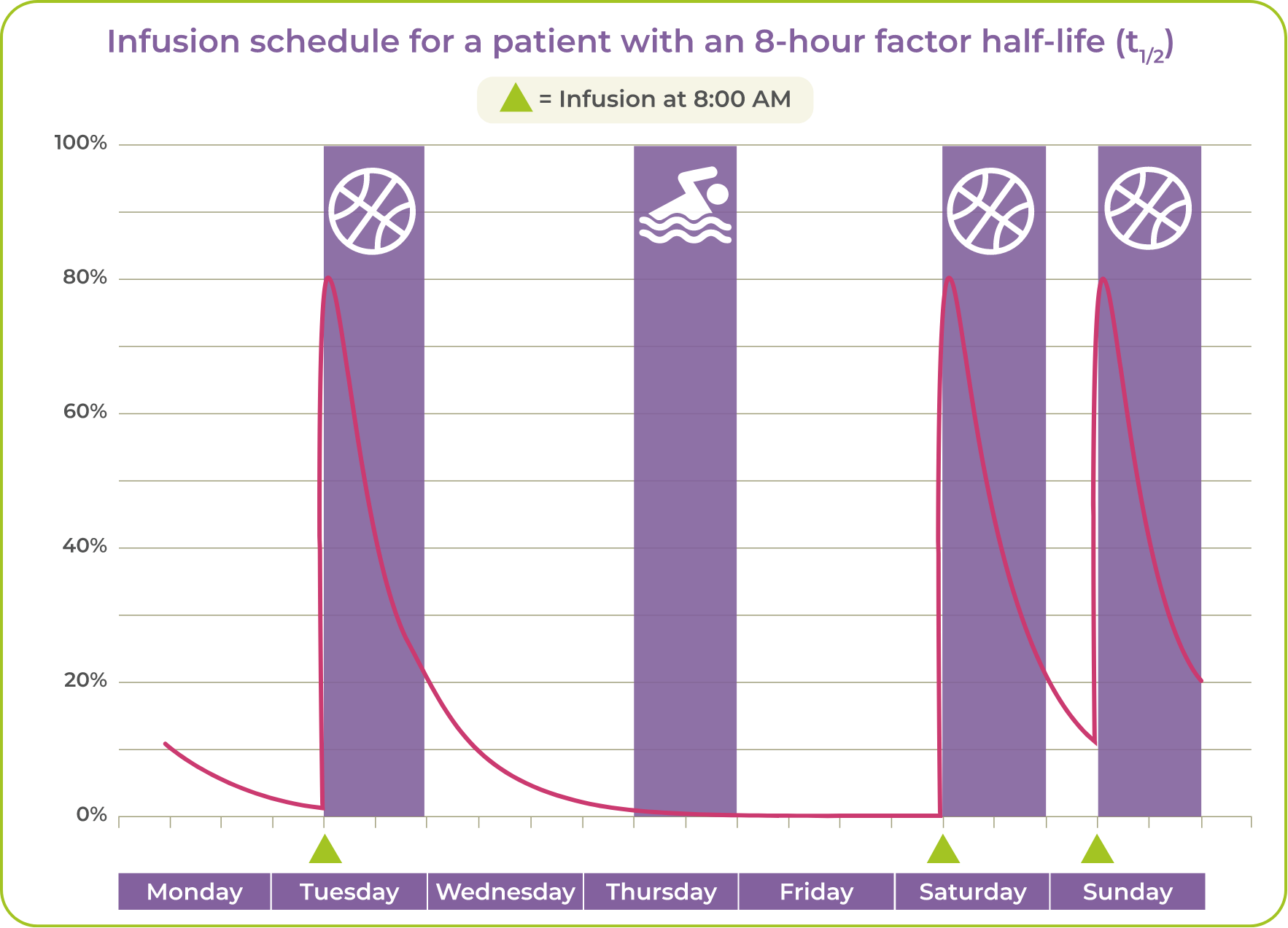
NOTE: The longer the half-life of a product, the less critical the timing of infusions.
Are there other factors that impact half-life?
Some people with hemophilia who have developed inhibitors against FVIII have a shortened half-life. Their immune systems produce antibodies that “inhibit” clot formation by destroying the clotting factor before it has a chance to stop the bleeding. The cause of inhibitors is still not entirely clear. The presence of an inhibitor makes treating bleeds more difficult. Standard treatment does not work, and other methods to control bleeding must be used. Other factors that can affect a person’s half-life include age, blood type, and certain genetic factors.
How do I determine the half-life of my treatment?
Many HTCs will offer testing called pharmacokinetic (PK) testing.
This testing involves measuring factor levels pre-factor administration and at certain time intervals after a treatment. This is the best way to determine what your individual half-life is. Knowing this information may help your doctor tailor your prophylaxis treatment to your lifestyle and activity level.
